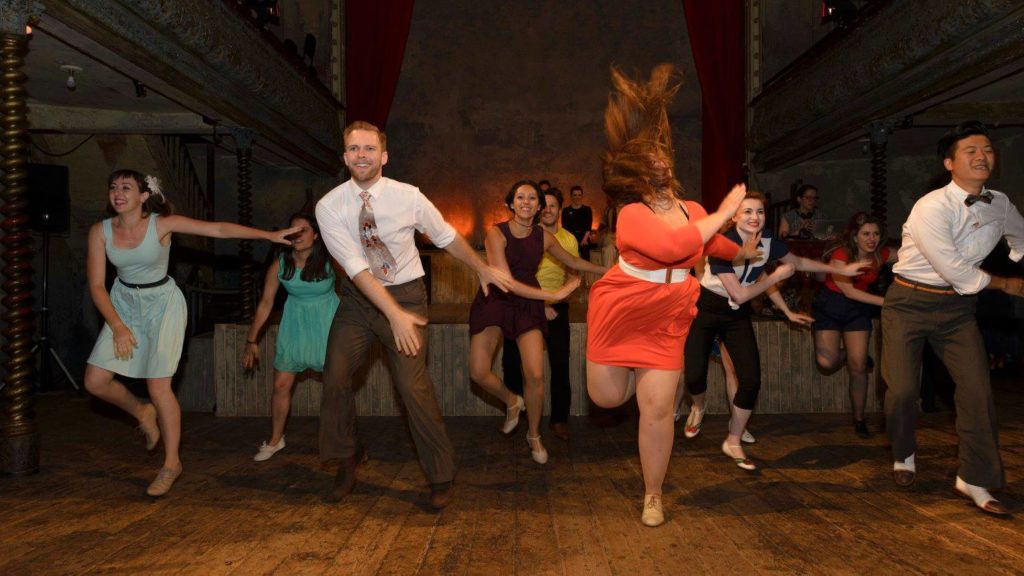Solo Jazz Machine exists to make solo jazz dance practice easier for everyone
The philosophy behind Solo Jazz Machine is:
Project-based practice
Self-directed practice is great, but when you’re dancing improvised solo jazz, it can be hard to know what to focus on.
A lot of us have a vague idea that we want to be better, and are quick to point out the long list of things we need to improve, but trying to tackle them all at once is exhausting and unhelpful.
This site is based on the idea of project-based practice.
The benefit of working with projects is that it allows you to focus more deeply on just one or two projects–meaning you can come out of your session feeling like you’ve really made progress with a specific element of your dancing.
Learning through positive reflection
The other benefit of having a project to focus on is that it gives us a specific success criteria to assess our performance.
Focusing on only the aspect of our dancing that we have been working on gives us permission to not be critical of everything else, because we weren’t focused on anything else anyway.
It’s hard to succeed while carrying a catalogue of our own perceived shortcomings, so when assessing how your practice went, start with positively framed questions:
- Where did I feel that I successfully did the thing I was working on?
- Was there anything I especially liked about what I did?
- What felt good?
- What should I keep doing?
- What should I start doing?
Although filming yourself dancing might feel mortifying it makes it much easier to reflect and answer these questions.
Where did the idea come from?
In July 2017 I completed a 30 day solo challenge with the goal of improving my solo jazz improvisation. It was a great project, and had hugely a positive impact on my dancing and my confidence.
The challenge works by enabling you to focus on a new project every day,and getting feedback from a partner which leads to the next day’s project. This idea of focusing on just one thing and not getting caught up in thinking about all the things at the same time, was freeing and effective!
I figured, why not create a tool that’ll give me a project to focus on when I practice?
The 30 Day Solo Challenge
If you ever want to try it (and I’d totally recommend it) , here’s how it works:
- Find a partner. They can be anywhere!
- Each day, you each film yourselves dancing improvised solo jazz to a song you have agreed that both of you will dance to (give yourself a little warm up if you like, but the idea is to film in one shot, not have multiple goes).
- Send the video to your partner.
- When you get your partner’s video, watch it, pick out all the things you really liked, and then give them one project for the next day (e.g. “I like your spins but can you do more with them? Project for tomorrow: explore the difference between hard stops and soft stops”). They’ll be doing the same with yours.
- Send feedback to each other, agree a song for the next day, and off you go again with your new project.
- On day 1 and day 30, you dance to the same song. No project other than just to have a good time! This sets your baseline and allows you to benchmark progress.
It’s a great way to give focus to your practice because you only need to focus on the project. And it doesn’t matter if you have relative skill levels etc cos everyone’s on their own journey, right? Max 15mins per day commitment.
When I started on my first 30 Day Challenge I set myself the relatively simple goal of being able to dance through an entire song (I struggled a lot with this!)
At the end of my first 30 day challenge, I wanted to be able to look back and see progress so I pulled some clips into a video.
Massive thanks to the inimitable Cat Foley for being a relentlessly positive, helpful and inspiring partner in crime, and big thank you to Kate Harrison who we stole the idea from in the first place (and I believe she got it from The Blues Experiment)
https://www.youtube.com/watch?v=GdXDziSm7oM
Who made this?

Solo Jazz Machine is the brainchild of
Katie Stotter, a lindy hopper based in London, UK.
…that’s me, with all the hair.
Photo by Mark Wheeler, at Wilton’s Music Hall.